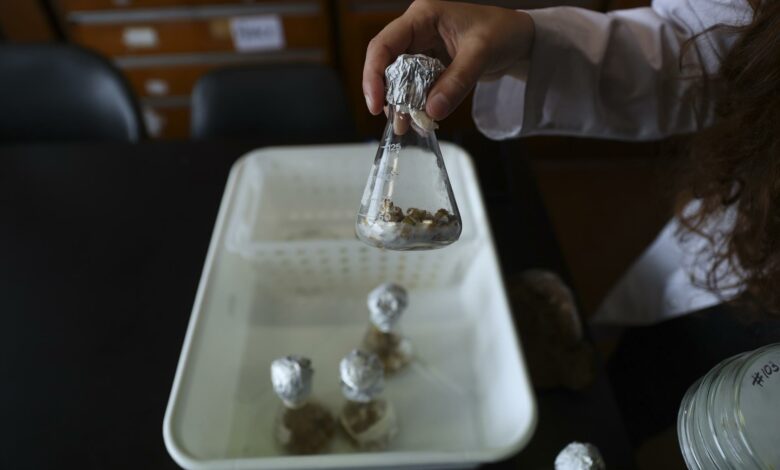Argentine scientists discover fungus that can decontaminate cigarette butts

By Augusto Morel
Buenos Aires, Aug 19 (EFE).- Scientists in Buenos Aires have discovered a fungus that can decontaminate cigarette butts — one of the most common waste found on Argentina’s beaches.
Although small and often gone unnoticed, one cigarette butt can contaminate up to 40 liters of water, making it a severe pollutant of the ocean.
“It all started through an NGO that cleans beaches and who didn’t know what to do with all that toxic material, so they contacted us to find a solution,” biologist at the Experimental Mycology laboratory of the University of Buenos Aires (UBA), Pilar Núñez, tells Efe.
The most polluting elements in a cigarette are tar and nicotine, which remain active in the butt even after combustion. The only way to decontaminate it is through bioremediation — a process that uses living organisms to eliminate toxins from a material.
Scientists at UBA have found a fungi species that can be used in the bioremediation of cigarette butts. White-rot fungi grow on tree trunks in the jungle of the Misiones region on the Argentinean coast and digest moist wood, causing it to rot.
“We isolated the fungi and brought them back to the lab to begin treatment. They can degrade and feed on wood or paper, and when they come into contact with cigarette butts they eat the cellulose acetate of the filter, cleaning the toxic environment to defend themselves and survive,” Núñez explains.
The project will soon be tested on a pilot plant that could bring the environmental recycling technology to the industrial level.
“If I manage to generate a system that removes toxic waste from the environment, you have a free hand to reuse it,” the biologist says.
While the scientists have succeeded in finding the solution to decontaminate cigarette butts, they hope to be able to expand the project for other toxic materials.
“This research can open a lot of doors,” Raúl Itria, researcher at the National Institute of Industrial Technology (INTI), says.
White-rot fungi can also absorb heavy metals and metalloids such as chromium and arsenic, which are harmful to the environment and human health, he explains.
But the scientists are facing challenges and struggling to find funding to expand the project.
“Science in Argentina is difficult, we have a very high level and good universities, but we have been struggling for many years because of the situation we are living in,” Dr. Laura Levin, head of the Experimental Mycology laboratory at UBA, tells Efe referring to the economic crisis Argentina is currently facing.
Funds for the research projects are accessed through annual competitions. The maximum amounts for next year reach up to $4,400 dollars, which barely covers the necessary expenses of the trials.
“Fortunately, there are young, eager people who with a bigger budget, could achieve much more,” Dr. Levin says. EFE
am/mp/jt
No comments:
Post a Comment